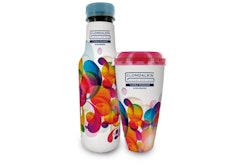This content was written and submitted by the supplier. It has only been modified to comply with this publication’s space and style.
A new generation of aqueous inkjet printers from THINK LABORATORY that will print onto plastic film for applications such as short-run food packaging, will be powered by the Harlequin RIP, the software engine that drives the printing industry's highest performing digital presses. Harlequin is developed by Global Graphics Software, a leading developer of software platforms for digital printing.
THINK LABORATORY, a major global supplier of advanced gravure engraving equipment based in Japan, has licenced Harlequin because it is faster than other vendors' technology and can produce optimal output quality thanks to Global Graphics' new multi-level screening technology which was launched earlier this month and will be on show at drupa 2016. The quick-response technical support that is available from Global Graphics' Tokyo office was also a deciding factor for the company.
Kaku Shigeta the director of THINK LABORATORY Co., Ltd. said "It is essential to use the optimal RIP technology available to improve print quality. The Harlequin RIP will give us that output quality and it has a long track record in digital printing and with quick technical support in Japanese."
Yoshiyuki Hagiwara, the director of Global Graphics KK in Tokyo said, "We are honored to work with THINK LABORATORY on what will be an exciting new product range. Global Graphics KK's professional technical support team will strongly assist Think Laboratory's integration of wide range of Harlequin screening technologies and color management technology."
Reputed for the quality of its output as well as its speed, the Harlequin RIP transforms design and pre-press data into a format that can be printed and feeds those pages to the press. It's compatible with a wide range of PDF design tools and compliant with industry standards.
The Harlequin Multi-Level Digital Screening Engine(TM) varies the amount of ink delivered from the inkjet head in any one location on any type of media to overcome common problems such as streaking and mottling that are frustrating many press manufacturers.






















